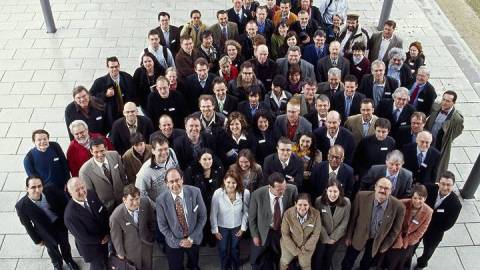NYTimes Story on Open Review in Academia Sparks Conversations Across Campuses

Quality news media inspire constructive debate and diffuse innovations. An example came yesterday as the New York Times spotlighted the trend toward open-review publishing, reinvigorating conversations about the topic across university campuses. The article, which for the past two-days has been among the most e-mailed at the Times, focused on the humanities, where scholars are experimenting with new models for judging scholarship. Here are two of the examples highlighted by arts and ideas reporter Patricia Cohen:
Mixing traditional and new methods, the journal [Shakespeare Quarterly] posted online four essays not yet accepted for publication, and a core group of experts — what Ms. Rowe called “our crowd sourcing” — were invited to post their signed comments on the Web site MediaCommons, a scholarly digital network. Others could add their thoughts as well, after registering with their own names. In the end 41 people made more than 350 comments, many of which elicited responses from the authors. The revised essays were then reviewed by the quarterly’s editors, who made the final decision to include them in the printed journal, due out Sept. 17….
…In the humanities, in which the monograph has been king, there is more inertia. “We have never done it that way before,” should be academia’s motto, said Kathleen Fitzpatrick, a professor of media studies at Pomona College. Ms. Fitzpatrick was a founder of the MediaCommons network in 2007. She posted chapters of her own book “Planned Obsolescence” on the site, and she used the comments readers provided to revise the manuscript for NYU Press. She also included the project in the package she presented to the committee that promoted her to full professor this year.
This type of crowd-sourcing of expert evaluation likely has many benefits. In particular, open review increases the number and diversity of disciplinary perspectives that judge a work or study. Apart from the humanities, this widening of the net for review can be particularly valuable for scholarship that spans disciplines such as public health or the environment, research that often bears on questions related to science, policy, ethics, communication, and economics.
An expanded pool of input on scholarship can also be important to fields that straddle the academy and the professional world such as communication or business. In these fields, traditionally trained academics are often joined in departments by faculty arriving after years spent in related non-academic professions such as journalism or marketing.
Both faculty models produce research and scholarship that can and should speak directly to the needs of industry, media, government, and professionals. Widening and diversifying the review process to include not just university-based experts but also leaders from the non-academic sector would help authors in these fields better identify relevant research questions. In addition, it would aid the process of producing research in a form that not only creates new knowledge but that is also directly usable by professionals and their institutions.
One thing left unaddressed–and possibly confused–in the NY Times article is that neither of the humanities journals experimenting with open peer-review are open-access, meaning that they can be freely and widely read online. Rather, the only way to read the scholarship published at the journals is by way of a university-based subscription.
If open-review facilitates upstream engagement, open-access promotes downstream outcomes. A major movement within science, open-access has many benefits, potentially diffusing knowledge more widely across disciplines, to decision-makers, and to the lay public, especially when this scholarship is called attention to by the news media, blogs, and social media such as Facebook and Twitter.
If done carefully and effectively, the ideal future for scholarship is to be both open-review and open-access. There are challenges to moving fields, scholars, universities, and publishers in this direction and the biggest challenge may simply be the funding model. There is also the challenge of defining quality when scholarship is judged from a greater number and diversity of perspectives. But there is also a major cultural challenge. As Cohen reports:
The most daunting obstacle to opening up the process is that peer-review publishing is the path to a job and tenure, and no would-be professor wants to be the academic canary in the coal mine.
The first question that Alan Galey, a junior faculty member at the University of Toronto, asked when deciding to participate in The Shakespeare Quarterly’s experiment was whether his essay would ultimately count toward tenure. “I went straight to the dean with it,” Mr. Galey said. (It would.)
Although initially cautious, Mr. Galey said he is now “entirely won over by the open peer review model.” The comments were more extensive and more insightful, he said, than he otherwise would have received on his essay, which discusses Shakespeare in the context of information theory.
In a follow up post, I will discuss my direct experience with the benefits of open-access publication. I will also reflect on how to shift the disciplines I am most familiar with–communication and political science–in the direction of open-review and open-access.
In the meantime, watch the Big Think interview below with Krisztina Holly, Vice Provost for Innovation at the University of Southern California. In the first part of the interview she addresses the big challenges facing higher education, especially in the area of doctoral education. In the second half she offers her perspective on open-access publishing. Transcript of this portion follows.
What do readers think? Do you agree that there is great promise—and the need for—open review and open access in academic scholarship?
Krisztina Holly: There are a lot of changes that are happening now that are really going to be impacting the way innovation happens in the university. One of them, for example, is open access to research results and people are publishing increasingly in open access journals and in fact I think there have been about 5,000 new open access journals that have popped up online in the last couple of years that are circumventing the typical peer reviewed printed journal publications and that will have some significant affect in the future. It’s not just a matter of open access to the papers, but also there has been a greater drive towards open access towards the data itself. It is somewhat controversial because there is definitely an interest by faculty with all the work that they put into collecting that data and this has been a challenge for a while, but it is exacerbated by this new open access. How do you get to benefit from your own data that you’ve worked so hard to collect and then and publish on? So how long is it appropriate to hold back that data before you share it with other people? Obviously the sooner you get the data out there the more people will benefit and at the same time you need to motivate faculty to be collecting that data in the first place and so that will be an interesting thing to see.





